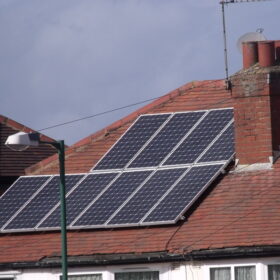As the world pivots toward a net-zero future, clean energy cooperation is emerging as a cornerstone of modern trade diplomacy. In this evolving landscape, the proposed Free Trade Agreement (FTA) between India and the United Kingdom holds the potential to dramatically accelerate bilateral collaboration in the renewable energy sector. By breaking down trade barriers, easing technology transfers, and promoting green investment, the India-UK FTA could be a defining moment for clean energy progress on both sides.
India and the UK have both laid down ambitious climate goals. India, the third-largest emitter of greenhouse gases, has committed to achieving 500 GW of non-fossil fuel capacity by 2030 and reaching net-zero by 2070. On the other side, the UK aims to hit net-zero emissions by 2050 and has emerged as a global leader in offshore wind, green hydrogen, and clean finance.
The convergence of these ambitions is no accident. During the 2021 UK-India Roadmap agreement, both nations vowed to deepen cooperation in climate and energy, with clean energy flagged as a key pillar. With India emerging as the fastest-growing renewable energy market and the UK as an innovation hub, the foundation for energy collaboration is already in place. What’s been missing is a structural framework that reduces commercial friction, precisely what the FTA intends to provide.
One of the key components under negotiation in the FTA is the reduction of tariffs and non-tariff barriers on clean technology goods such as solar modules, wind turbines, battery storage equipment, and electric vehicle (EV) components. For context, India imposes basic customs duties of up to 40% on imported solar modules and 25% on solar cells. These duties, while aimed at promoting domestic manufacturing, have also increased project costs and limited access to advanced technologies.
The UK, with its expertise in offshore wind, grid modernization, and energy storage, could supply high-end tech solutions to Indian developers. An FTA that creates duty-free corridors for these goods could sharply reduce project timelines and costs for Indian developers, while unlocking a massive market for British manufacturers.
According to the UK Department for Business and Trade, Indian demand for imported green energy components could touch $30 billion by 2030. Even a 10% increase in UK’s share of this market due to lower tariffs could mean an additional $3 billion in export earnings over the next five years.
Trade is only half the story, the bigger opportunity lies in green finance. Indian renewable energy projects require an estimated $250 billion in capital by 2030. The UK, home to one of the world’s most mature green finance ecosystems, including institutions like the Green Investment Bank and large ESG-focused funds, is ideally positioned to bridge this gap.
An FTA that streamlines investment norms, simplifies repatriation rules, and improves investor protection could trigger a new wave of British investment into Indian green infrastructure. For example, the City of London Corporation has already indicated interest in collaborating with Indian entities to issue green bonds and invest in solar parks and hydrogen clusters. With clearer FTA-backed legal protections, such capital flows could become mainstream.
In 2023, British International Investment (BII) committed over $300 million to Indian clean energy platforms. With FTA-supported incentives, such investments could triple by 2027, according to analysts from Ernst & Young.
Beyond trade and finance, the FTA could also encourage joint ventures in cutting-edge technologies such as green hydrogen, carbon capture, and EV battery tech. The UK’s leadership in innovation (ranked 4th globally in the Global Innovation Index 2023) complements India’s scale and engineering talent.
A structured intellectual property (IP) chapter in the FTA could provide the legal scaffolding for co-innovation, enabling Indian and British companies to jointly develop and commercialize clean technologies without fear of IP theft or legal ambiguity. For example, Tata Group is already investing over £4 billion to set up a gigafactory in the UK. Similar collaborations could be replicated in India with British firms under a robust FTA.
An underrated benefit of the FTA could be the institutionalization of climate diplomacy. Both countries could embed clean energy cooperation within their trade governance structures, possibly creating a Clean Energy Cooperation Council under the FTA’s implementation framework.
This can help coordinate national policies, such as standardizing energy efficiency norms, battery recycling guidelines, and even carbon pricing mechanisms. Such alignment could reduce regulatory uncertainty and give investors greater confidence in cross-border projects.
However, the road to a clean energy-centric FTA isn’t without hurdles. India’s insistence on retaining some protection for its domestic solar manufacturing and the UK’s push for access to Indian services markets have created bottlenecks. Additionally, concerns around sustainability clauses potentially being used as non-tariff barriers by developed nations remain contentious.
Yet, given the geopolitical and economic imperative of climate action, both governments have shown political will to find a middle ground. Recent rounds of negotiations indicate that climate and sustainability are among the top three priority sectors for finalizing the deal.
The India-UK FTA, when viewed through a green lens, is more than a trade pact, it’s a transformative climate partnership. It offers a win-win framework where India gains access to advanced technology and capital, and the UK secures a growing market for its green exports and innovations.
In a decade that will define the global energy transition, this agreement could serve as a model for how bilateral trade policy can align with planetary goals. If both nations seize this moment, the FTA could well become a catalyst for one of the most meaningful clean energy alliances of the 21st century.
The views and opinions expressed in this article are the author’s own, and do not necessarily reflect those held by pv magazine.
This content is protected by copyright and may not be reused. If you want to cooperate with us and would like to reuse some of our content, please contact: editors@pv-magazine.com.








By submitting this form you agree to pv magazine using your data for the purposes of publishing your comment.
Your personal data will only be disclosed or otherwise transmitted to third parties for the purposes of spam filtering or if this is necessary for technical maintenance of the website. Any other transfer to third parties will not take place unless this is justified on the basis of applicable data protection regulations or if pv magazine is legally obliged to do so.
You may revoke this consent at any time with effect for the future, in which case your personal data will be deleted immediately. Otherwise, your data will be deleted if pv magazine has processed your request or the purpose of data storage is fulfilled.
Further information on data privacy can be found in our Data Protection Policy.